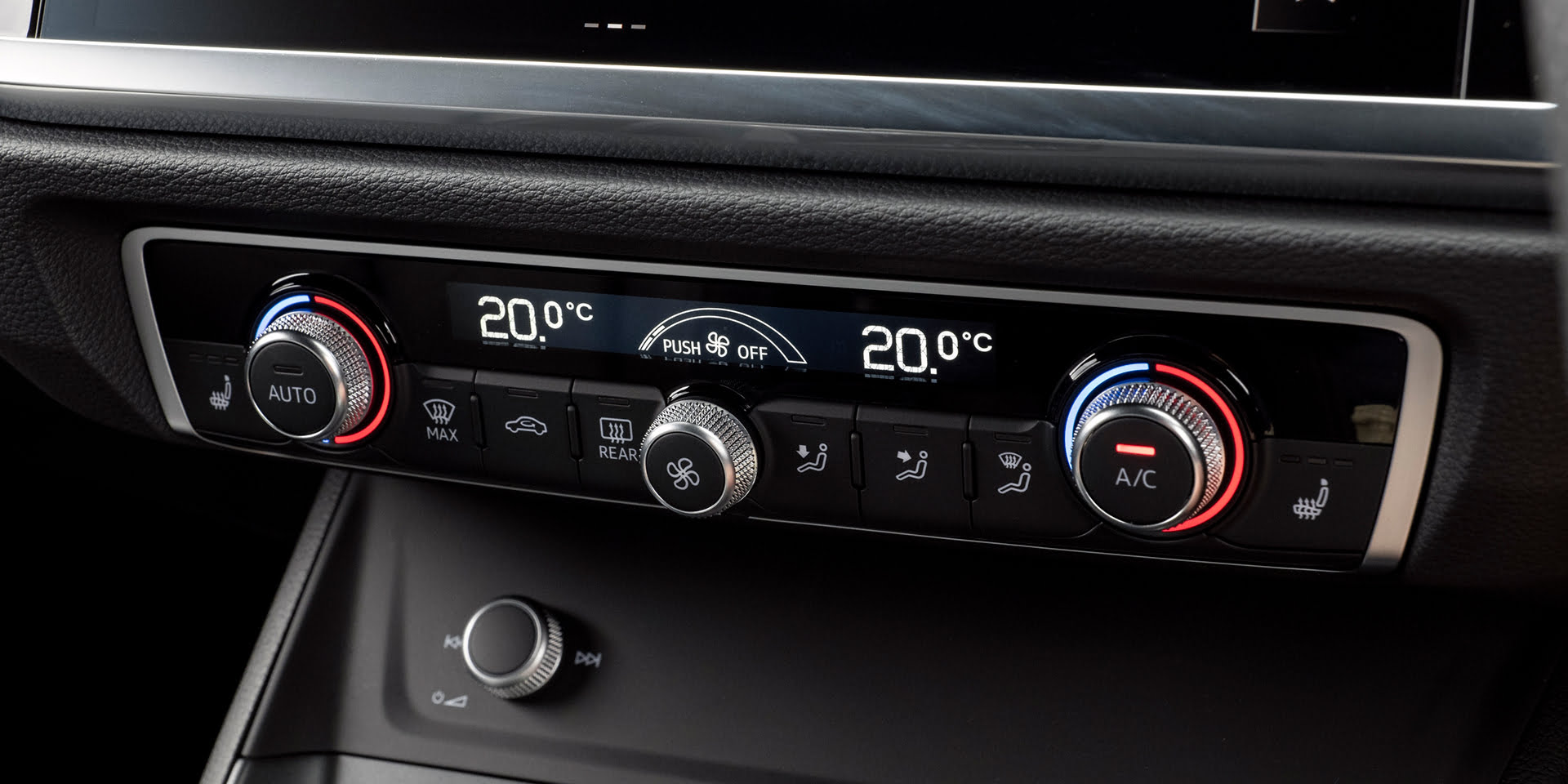With summer heatwaves becoming more frequent here in the UK, we are all looking for the best ways to keep cool in the heat, especially on long car journeys.
The good news is that all new cars now come with an air conditioning system (AC) that can tackle the heat. If you are looking to change your car, a salesman might offer an upgrade called climate control, but what is the difference?
In this article we will explain how both work to keep your car’s interior temperate, and which option is best for your vehicle.
What is air conditioning (AC)?
In essence, your car’s AC works like a rudimentary version of your fridge, the physics of which does get a little complicated.
In a nutshell, the AC uses a fan to suck in warm air from outside or the car’s interior. Once inside the AC, the air comes into contact with a coolant, or ‘refrigerant’, that lowers its temperature before it is blown into the cabin.
The AC uses this coolant to heat the car when prompted too. In this case, the coolant runs through a type of radiator connected to the AC which transfers heat from the running engine to increase the temperature of the cabin air.
AC is entirely manual, meaning that you have to set it yourself when the inside of the car is too hot or cold. There is usually three dials you need to set on the dashboard:
- The temperature dial – some cars allow you to set the exact temperature you are looking for by turning this dial, but most have red (hot) and blue (cold) zones.
- The fan speed dial – this controls how fast the AC blows hot or cold air into the cabin, though the fastest setting can get noisy depending on the car. If you want a drastic temperature change, use the top setting, but if you want to maintain a temperature, use the lowest setting.
- The air placement dial – this controls where the AC concentrates its flow of air – you can usually choose to focus airflow on your feet in the footwells, at your chest and face using the air vents on the dashboard, or on the windscreen to to de-mist it.
What is climate control?
Climate control is a more advanced version of AC that actively monitors the temperature of the inside of your car using sensors, and works to reach and maintain your desired temperature without any prompting.
While AC on its own needs to be set manually, climate control is an automatic ‘set and forget’ feature, which is more convenient for the driver.
Some modern cars are fitted with dual-zone, tri-zone and even quad-zone climate control, so you can set the desired temperatures of different areas of the cabin, independent of one another.
Dual-zone usually lets you differ the temperatures in the front and back, tri-zone lets you set temperatures for each front seat as well as the rear, and quad-zone systems let you set the temperature for each corner of the car’s interior.
So, what is the best choice for you?
Some upmarket new cars already come with climate control installed as standard, but in most cases this feature will be only included in higher trim grade models or as an optional extra.
Climate control is the better system, but is it worth paying extra for? If you live in a rather hot climate, or you drive long distances on a daily basis, it is definitely worth considering.
If you plan on taking the occasional family road trip, climate control is also the best way to keep passengers in the rear from overheating, and the added convenience of not having to adjust the AC yourself can make long journeys less stressful.
While you are likely to have to spend more for this AC upgrade, remember that climate control will raise the value for your car when you come to sell it too.
That said, particularly for those of us that just use our cars to get from A to B across town, standard AC can be just as effective at keeping you cool in the summer and warm in the winter, you will just have to set it yourself.
Read more:












